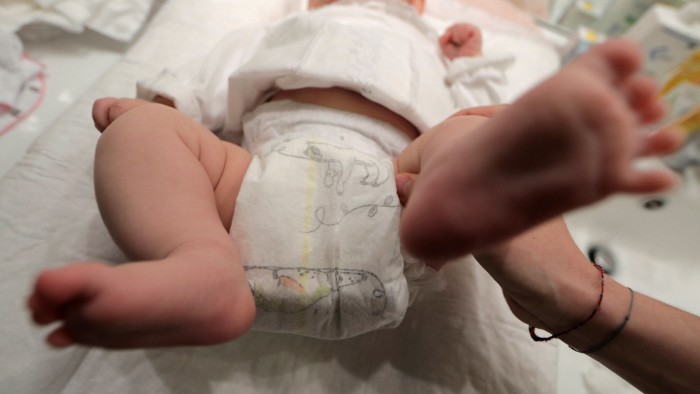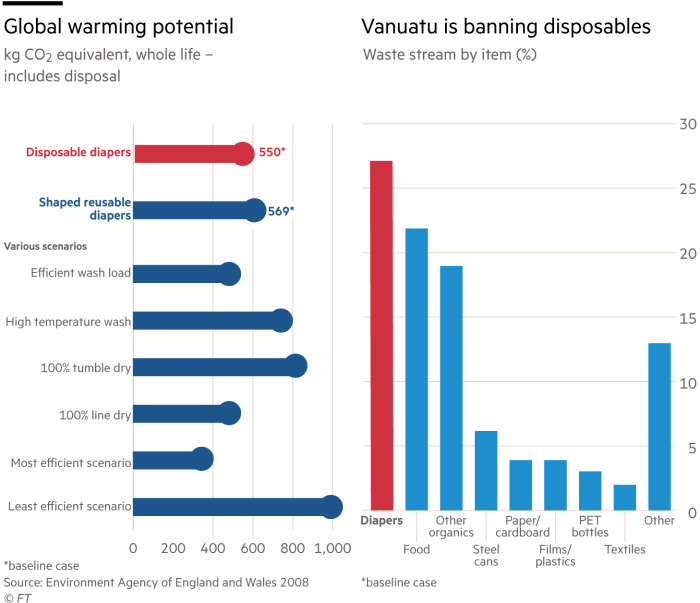Carbon counter/nappies: it all comes out in the wash

Roula Khalaf, Editor of the FT, selects her favourite stories in this weekly newsletter.
Carbon counter is a series of Lex articles estimating the climate cost of different lifestyle choices. The other articles are here
Going green is a murky business. Consider the newborn baby, who will get through some 5,500 diapers before being toilet trained at two and a half. Scale that up by the 140m babies born this year and you get 770bn nappies for the 2021 cohort. The UK alone trashes 3bn a year, accounting for a couple of per cent of household waste. Good for business — the global nappy market is estimated to exceed $71bn next year. Less so for the environment.
Yet eco-conscious parents opting for reusable diapers are not necessarily saving the planet. Assume six daily nappy changes and an electricity-guzzling 60 degree washing machine cycle every second day and you get up to 569kg of CO2. Add in a similar number of cycles in a tumble drier, necessary in small flats or rainy climes, and it stacks up to 815kg. That compares with 550kg for disposables, according to the go-to survey by the Environment Agency.
Before ditching the terries, check the caveats. The EA’s original study (before being updated with Defra a few years later) was published in 2004. Some of its assumptions look bizarre. Did 10 per cent of parents really iron their terry nappies?

Subsequent studies, including by the UN and Zero Waste Europe, conclude that reusable is better, reducing the carbon footprint by as much as 40 per cent. That partly reflects developments in reusable nappies, now available in fabrics like bamboo. Disciples of reusables wash them on less intensive 40 degree cycles and spurn soaks in chemicals. Some go further, buying their nappies second hand: Facebook and other sites demonstrate a thriving market in “preloved” reusables.
Cash-back subsidies and other incentives are available from Derbyshire in the UK to Capannori in Italy. Last year Laura Tweedale, an advocate of reusables, counted 41 local authorities across the UK offering vouchers. The Pacific archipelago of Vanuatu plans to ban disposables altogether, reflecting the proportionately high burden of waste that these create in some developing countries.
Reusables still leave a chunky footprint, especially in places where power is coal fired and water scarce. A cleaner — at least in one respect — alternative comes from rural China: kaidangku, or open crotch pants. New parents in the west need not fret. They are also available on Etsy.
Carbon counter is a Lex series for the weekend FT examining how readers can reduce their CO2 footprint through lifestyle changes. Other articles are here.
Climate Capital
Where climate change meets business, markets and politics. Explore the FT’s coverage here.
Are you curious about the FT’s environmental sustainability commitments? Find out more about our science-based targets here

Comments